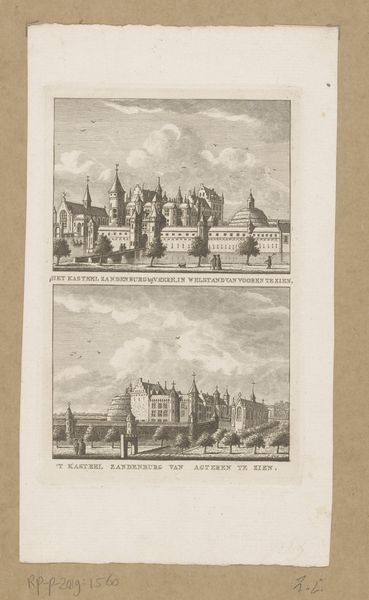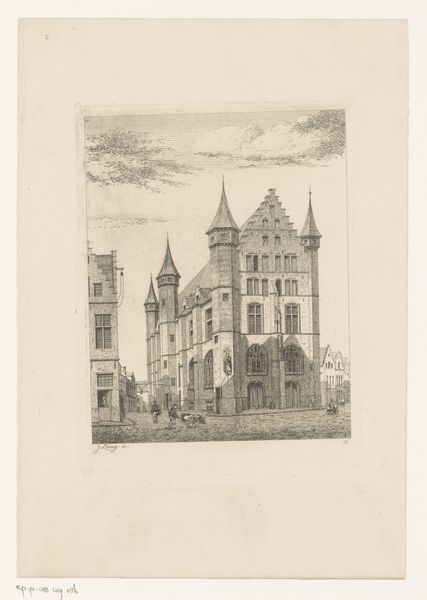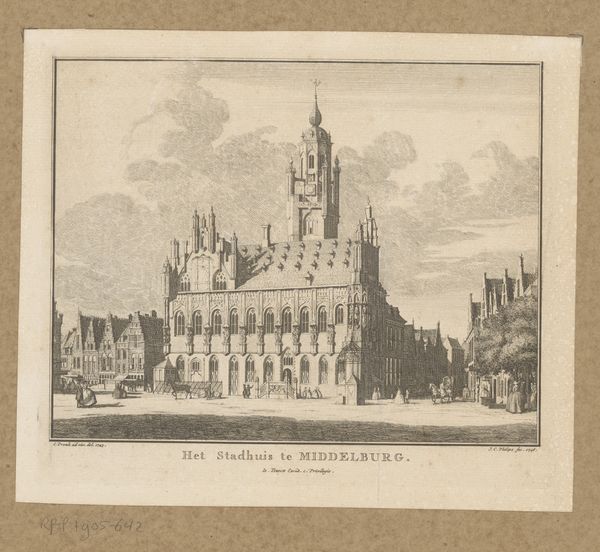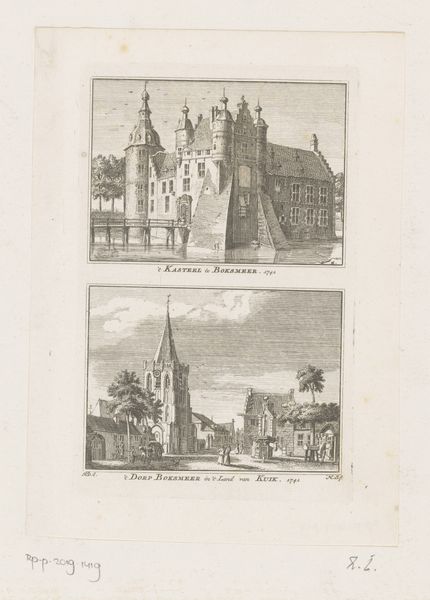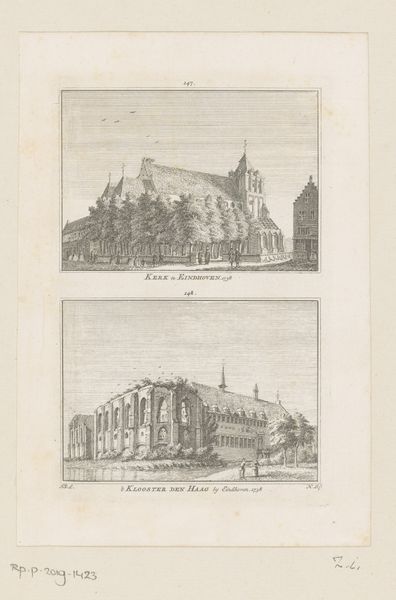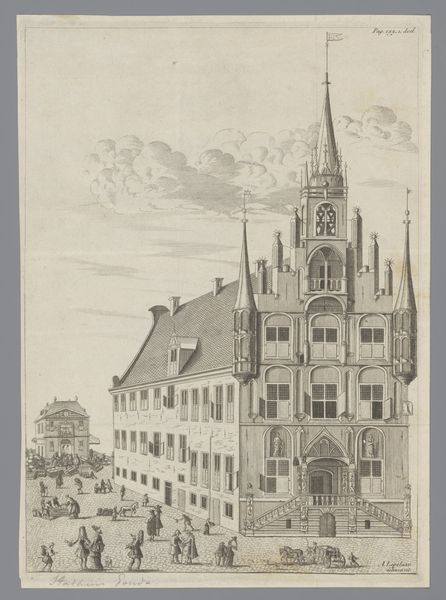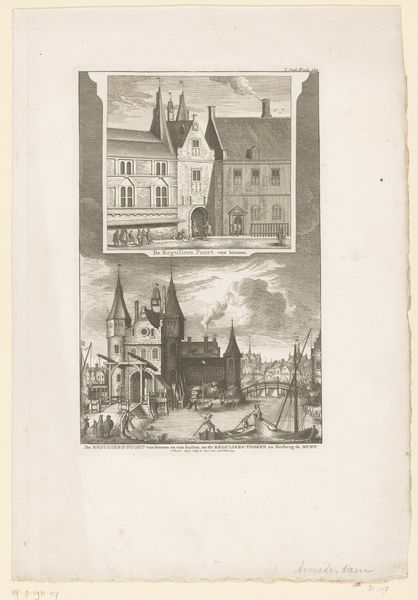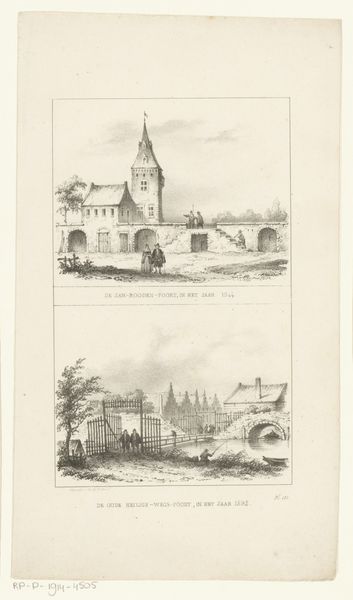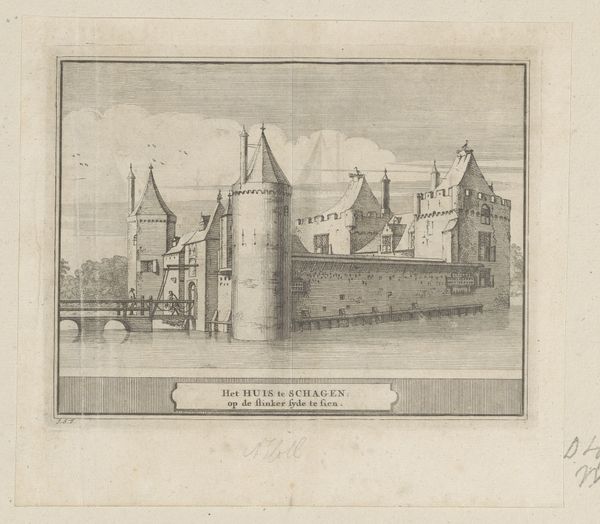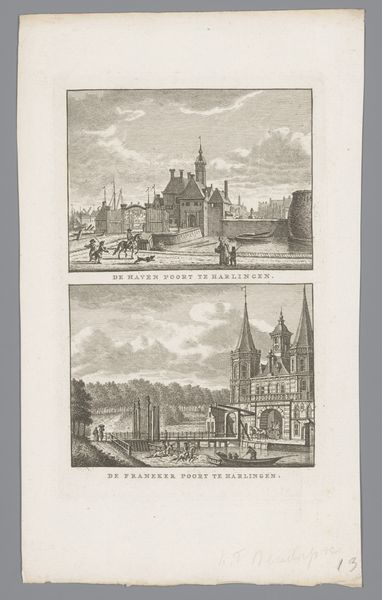
Gezicht op het Vrijthof, de Sint-Servaasbasiliek en de Hoofdwacht te Maastricht 1746 - 1792
0:00
0:00
Dimensions: height 169 mm, width 115 mm
Copyright: Rijks Museum: Open Domain
Editor: This is Hendrik Spilman’s print titled "Gezicht op het Vrijthof, de Sint-Servaasbasiliek en de Hoofdwacht te Maastricht," placing it somewhere between 1746 and 1792. It's an engraving depicting a cityscape. I am struck by the linear perspective. What strikes you about this piece? Curator: Immediately, I am drawn to the formal arrangement. Observe how the artist manipulates light and shadow, not for mere representation, but to construct a complex visual architecture. The towers are rhythmically organized to direct the gaze and convey stability and geometric interplay. Editor: You focus on the geometry... Does the technique add something for you? Curator: Indeed, consider the very materiality. The lines of the engraving are not merely descriptive; they are constitutive of the form itself. Each stroke contributes to the overall texture and visual weight, thereby impacting the viewer’s perception. It's through an astute visual engagement that meaning emerges. Do you agree? Editor: Yes, but it does seem quite literal. How might semiotics, help us appreciate it differently? Curator: Semiotics can deconstruct the visual signs within the work, thus examining how the buildings, the human figures, and even the clouds function as signifiers. Structuralism highlights the relationships between the print's various elements, examining their interactions and their contribution to a unified visual language. This deeper theoretical engagement is central to our method. Editor: I see, shifting away from what it shows, toward how it communicates meaning. It makes you realize there are more elements at play. Curator: Precisely. It is this critical assessment of form, structure and materiality that brings us closer to grasping the essence of the work, wouldn’t you say?
Comments
No comments
Be the first to comment and join the conversation on the ultimate creative platform.


